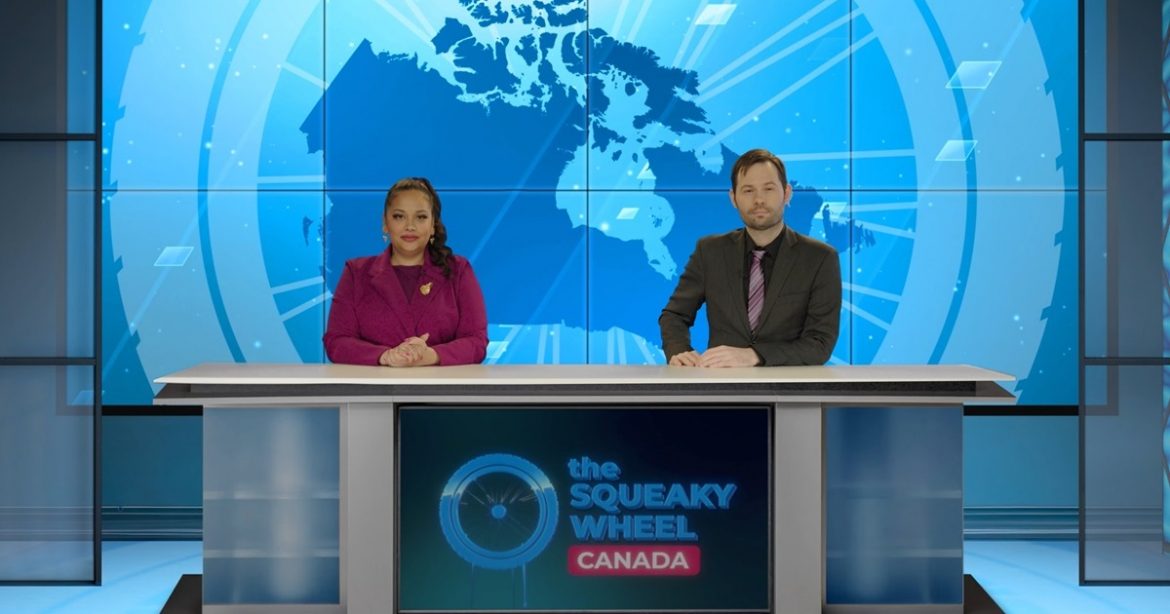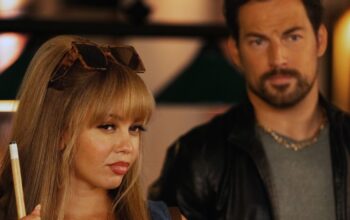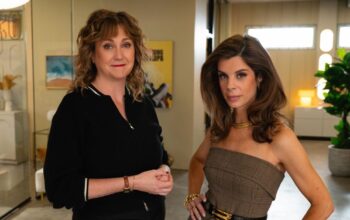Given the state of the world at present, satire like The Daily Show and The Onion are the gift that keeps on giving. Monday on AMI+, The Squeaky Wheel: Canada enters the ring. An eight-episode satirical, half-hour news show based on Steven Verdile’s popular web publication (also called “The Squeaky Wheel“), the series throws a lens on the absurd way ableist society members interact with people with disabilities — and the ensuing, sometimes extremely cringe situations they face every day.
I recently chatted with series producer Michelle Asgarali about the series and the inclusive production she created at every level. The show marked Asgarali’s first foray beyond the world of documentaries. “Andrew Morris from Hitsby had come across the website and connected with Steven, who originally created the web magazine format, and he thought this would make a great [series format] like The Onion,” she recalls.
“He came to me afterward and said, ‘I’m going to make this show. I really want to make it, but I’m not going to make it without you. Will you produce this show?’ I came from the doc space, I’m a documentary TV producer but I had worked in the disability space. We worked with a couple of comedians here in Toronto and this chance to kind of hybrid over into the scripted, slightly cracked, comedy space was just like, ‘Oh my gosh, no more dark side, no more deepest, darkest secrets.'”
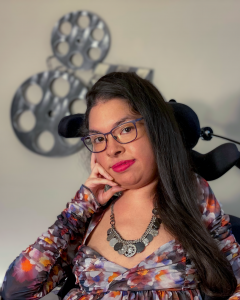
She was excited to make the shift. “Let’s make some light of these stories that we’re always telling in the disability space. Everybody in media in general, you get a lot of, ‘Let’s have an outside look in, let’s peek in.’ And this became, ‘Let’s look out and make fun of everybody else for a change,'” she explains.
Some of the episodes were informed by the staff’s real-world experiences, and some were ripped from the headlines. “We had all fresh stories for the series, from the Canadian perspective, of course. We had a virtual writers room with writers from Ontario, Alberta, and BC. It was about bringing to the table either things that made us cringe in the real world and how do we put a spin on that, [and news stories],” she says.
“In episode one, there’s a pretty dark story. One of our writers came across an article about, I think it was the woman in the States that was actually physically attacked by a rapist at the time who flipped over her chair and when he couldn’t manage something, walked away. And they said that they were bored. They were bored by the situation, and it became this kind of immediate cringe moment. Like, I mean, good, I guess, maybe? And so we thought, ‘This is something we need to talk about, because it’s a very strange form of ableism.’ And [D. Cole] went off with it, like, ‘Aren’t we good enough to be attacked? Why can’t we be attacked?'”
“Steven had a really great baseline, even for the website, the five kinds of golden rules of when you’re looking at story. And one of my favorites is, ‘Look to the absurd in any situation,’ because we’re not here to moan and groan and cry about a situation. We are here to make people laugh. And laughter disarms.”
As the show assembled its writers room and cast, Asgarali explains that including a representative cross-section of creatives from the disability space allowed them to get right to the storytelling. “We’re trying to find that balance. And I think the freedom that came from it was because either in the writers room or then with the actors or within the main creative forces coming from a community, coming from their own experiences, coming from different perspectives,” she shares.
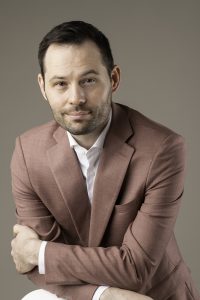
“Some people felt somewhat new to being described as disabled and not really understanding social aspects of it. Some of them were deep in disability justice. So having those perspectives allowed us to be free that we didn’t have to explain things first and then write. It was like coming in [and suggesting stories] and then you can find the funny. A lot of the writers and actors had talked about being in spaces where they’re the one disabled person.”
“When I’m in there, first I’ve got to explain to you why I need to use a diaper or why I need to do this …Let me explain that situation first and then let me tell you what the joke is. Here, you’re just coming and setting up a story about, ‘What if there were invisible disability dolls?’ You don’t have to explain all of the things of, ‘What is an invisible disability? Should we use that term?’ Invisible disability becomes the argument, maybe more than the thing.”
“[There’s] freedom in a space where everybody kind of gets it and you can say, ‘Hey, let’s not do that. Why don’t we do this?’ And that usually becomes more absurd, instead of pulling it back. And you find out there’s a lot more dirty minds than you expect.”
Asgarali explains that finding their cast and writers meant widening the net, and taking the extra steps to craft the voice of the show. “It was definitely an interesting process, and fun. You can’t really go through, especially with casting, the traditional process,” she points out.
“We did have an amazing casting director, Jesse Griffiths and their team, that helped us, but when they started off, they said, ‘We’re gonna put the call out through the agents.’ And we said, ‘Yeah, you’re probably not going to get that many submissions that way. So it was a full on open call and something similar to our writers, that we had sent out social media lists, of ‘How do you reach the community first?'”
“With our writers, we had a mini workshop. At the beginning. we had three Zoom calls with a big group. We were really lucky. We had a really big submission list. Within two weeks or three weeks that we put the call out there at least over 60 viable submissions.”
“And we had to pull that back and picked about 20 or so that we did sessions with [in] groups of four or five and brought in a guest to help us facilitate a writing workshop to teach them a little bit of TV writing skills [like] writing for time, but then also just to see how they work together and how they came up with ideas together and some contrasting voices so that we don’t have the same experience and the same perspectives for our main writers.”
“Originally we were like, ‘We need to choose three writers.’ And then we realized. ‘We can’t just do three writers,’ so we had to reformulate our process and bring in guests and contributors so that we could bring in more stories, more perspectives within that space.”
“And something similar happened to our casting. We knew we were going to have our four or five ensemble crew and our two anchors, that’s what we were aiming for. And oh my God, they were just amazing. It was just so much fun to see them on Zoom that first day. And finding where they would fit. We knew we wanted to make sure we expand disability representation, of course, within the space, but we also to try our best to get the other intersectionalities as much as we could, and what we ended up finding is we added guest stars.”
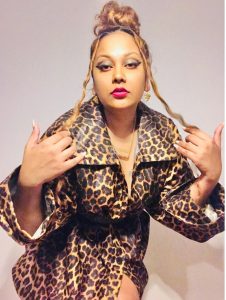
“We added day players that would come in one day and shoot two or three skits so that they could expand that and find other voices that the writers could then write something slightly different than for our main cast.”
Asgarali was thrilled to get her two leads, Gaitrie Persaud and Graham Kent, who play the faux news anchors.”Finding them kind of felt like a no-brainer afterwards. At the beginning, I expected I was going to have to fight to get a Deaf anchor in, because it was something I thought would be interesting if we found the right person,” she recalls.
“But as soon as Gaitrie came in and our broadcasters saw how dynamic and sassy and ridiculous she can be. And especially with Graham’s kind of straight man…that duo… I think we had about five people making decisions at that time. They were all on our top list and then our broadcaster said, ‘These are our top two favorites.’ And we’re like, ‘Yay, we don’t have to fight.'”
In addition to The Squeaky Wheel: Canada, you can also catch another of Asgarali’s projects on AMI+ next month. “Breaking Character was the doc show that I came from, that I co-created. The second season actually features some of our cast and writers in The Squeaky Wheel. They kind of overlapped around the same time. I promise I stepped back when the decisions were made,” she laughs. “They start in July.”
She’s also proud to be involved with the Disabled Producers Lab, an incubator for filmmakers from the disability community. ” “I have been lucky enough to co-lead with Ophira Calof, another disabled filmmaker, writer, and actor with the NSI, which is the National Screen Institute, a program or workshop to try and train up some new producers,” she shares. Applications are open now and being accepted until July 22, 2024 here.
The Squeaky Wheel: Canada premieres Monday, June 17th, streaming on AMI+ and then premieres linearly June 24th at 9 pm ET on AMI TV. Here’s a sneak peek.
Photos and video courtesy of AMI.
